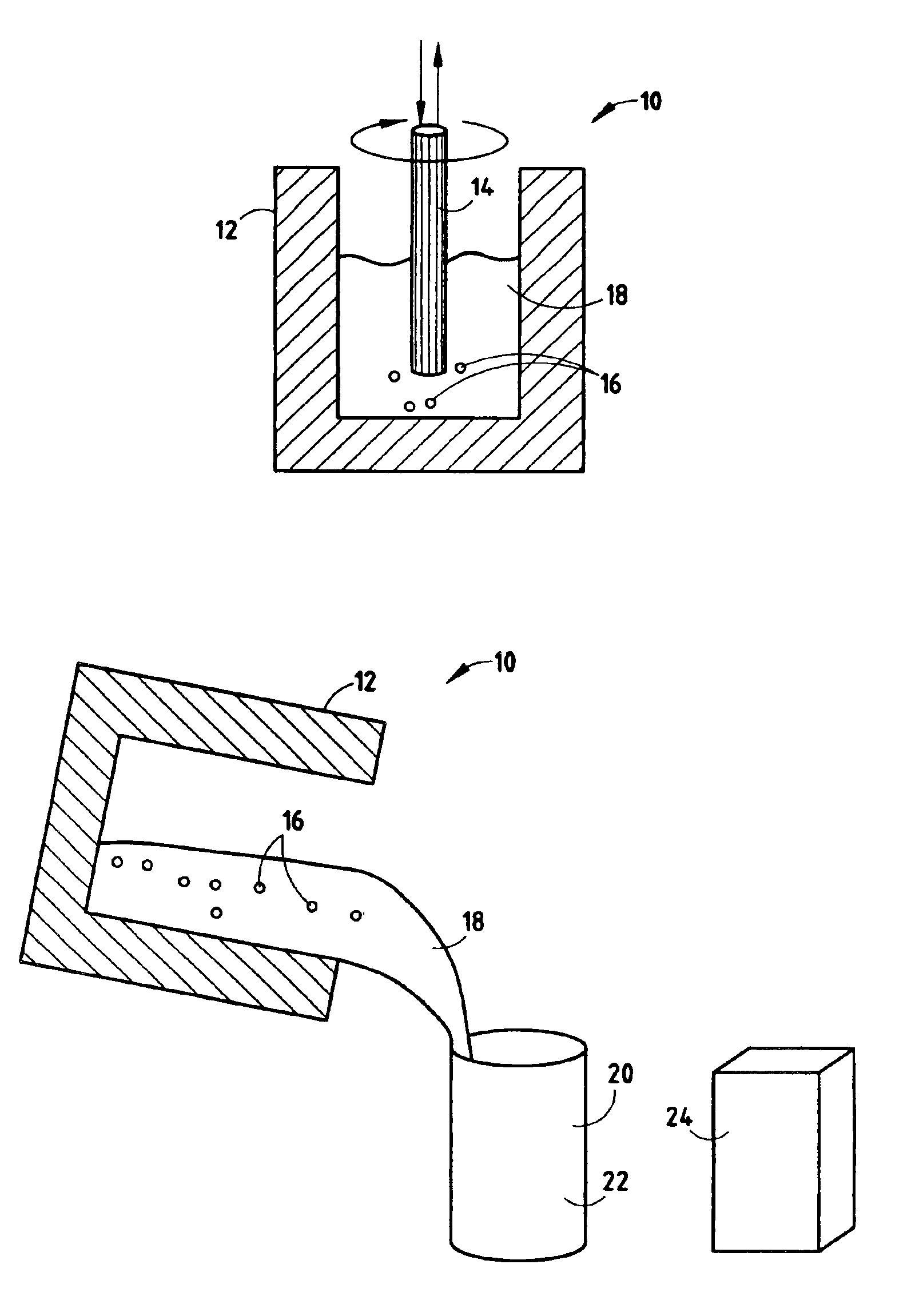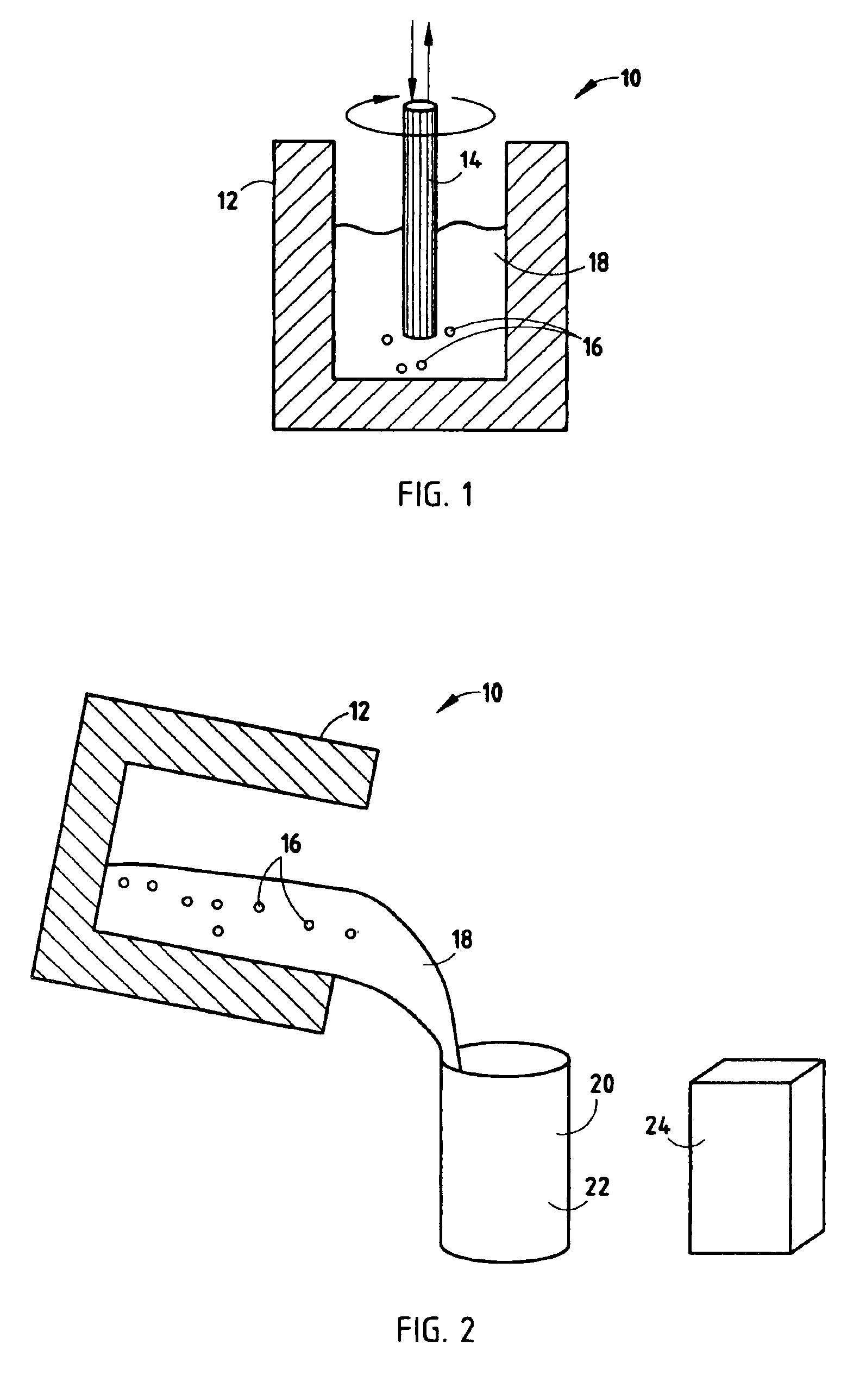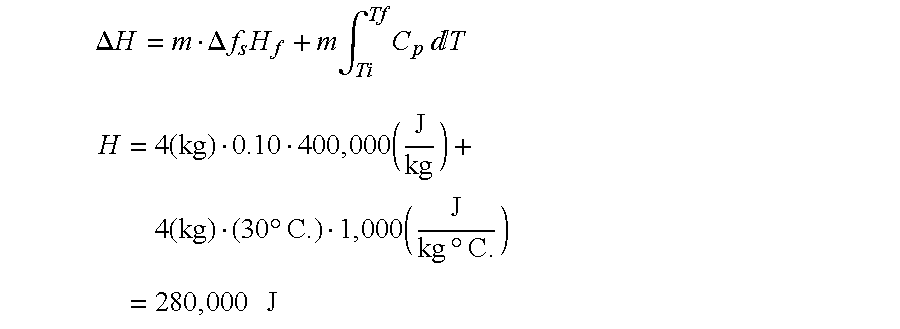Process and apparatus for preparing a metal alloy
a metal alloy and apparatus technology, applied in the field of industrial metal forming, can solve the problems of difficult control of heat removal using this technique, process limitations, and formation of non-dendritic slurries, and achieve the effect of reducing problems, facilitating more rapid cooling, and eliminating or reducing problems
- Summary
- Abstract
- Description
- Claims
- Application Information
AI Technical Summary
Benefits of technology
Problems solved by technology
Method used
Image
Examples
Embodiment Construction
[0018]Shown in FIG. 1 is an apparatus 10 for preparing a non-dendritic, semi-solid metal alloy composition in accordance with an embodiment of this invention.
[0019]A non-dendritic, semi-solid metal alloy composition is a composition containing liquid metal and discrete solid non-dendritic alloy particles dispersed in the liquid metal. Non-dendritic particles are particles that generally have a spheroidal or ellipsoidal shape, and which are formed as a result of convection in the liquid phase during nucleation and cooling of the liquid below the liquidus temperature of the alloy composition. One accepted theory is that the non-dendritic particles form as a result of convention which causes growing dendritic arms to break off, with subsequent ripening helping to smooth out the particles into the characteristic spheroidal and / or ellipsoidal shapes. For this reason, the non-dendritic particles are sometimes referred to as degenerate dendritic particles.
[0020]The apparatus includes a fir...
PUM
| Property | Measurement | Unit |
|---|---|---|
| weight fraction | aaaaa | aaaaa |
| size | aaaaa | aaaaa |
| time | aaaaa | aaaaa |
Abstract
Description
Claims
Application Information
 Login to View More
Login to View More - R&D
- Intellectual Property
- Life Sciences
- Materials
- Tech Scout
- Unparalleled Data Quality
- Higher Quality Content
- 60% Fewer Hallucinations
Browse by: Latest US Patents, China's latest patents, Technical Efficacy Thesaurus, Application Domain, Technology Topic, Popular Technical Reports.
© 2025 PatSnap. All rights reserved.Legal|Privacy policy|Modern Slavery Act Transparency Statement|Sitemap|About US| Contact US: help@patsnap.com



